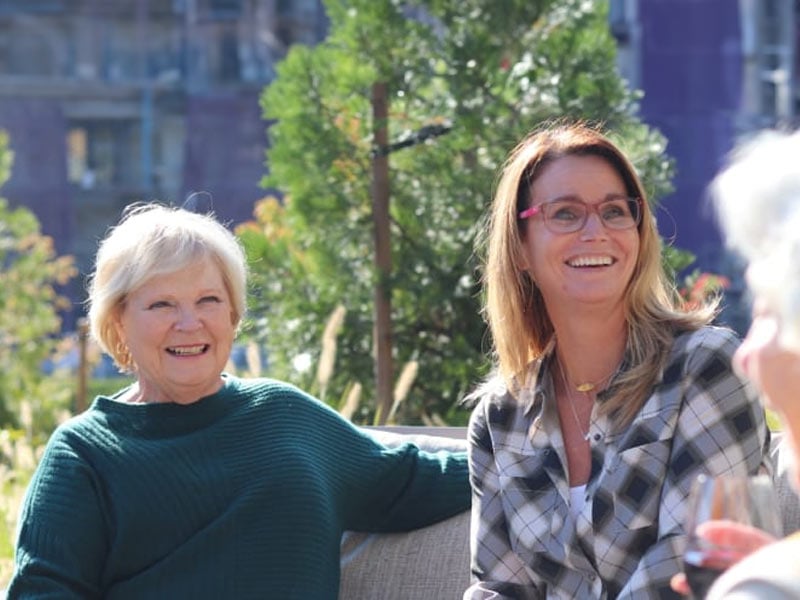Downsizing is inevitable
Retired Americans are downsizing earlier than ever, according to Harvard’s Joint Center for Housing Studies, which is good news for family members or caregivers who may have to help sort through possessions when it comes time to move. In fact, 27% of all American renters are over 55, and they accounted for 44% of renter growth from 2005 to 2016. This means older Americans are embracing the decluttering of their lives and living with less.
Having loads of “stuff” is nothing new to the American way of life, especially for adults who’ve raised families in a home for years. The U.S. Department of Energy reported that 25% of people with two-car garages didn't have space to park a car, and a report by the National Association of Professional Organizers found we'll spend an average of one year of our lives looking for lost possessions due to clutter.
Eventually, you’ll need to go through all the things you or a loved one has accumulated over a lifetime and downsize, so starting earlier can make a daunting job feel a bit more achievable. In fact, decluttering a home can be a wonderful opportunity to relive significant memories of your own or a loved one, while also helping with what might seem like an overwhelming task.
Here are 5 ways to begin the downsizing process:
1. Pace yourself. Going through a lifetime of important memories isn’t something you can get done in a weekend or even a week. Be realistic and take the time to make thoughtful decisions. Most experts recommend starting small and choosing one area at a time.
Pick one room or collection of items and go through piece by piece without rushing. After you finish with that box, take a break or a couple of days off, then start on another.
2. Help everyone feel in control of what’s happening. No one would want to walk in to find that all of their mementos have simply vanished, or are now laying in piles of garbage bags. Working as a team, you can all go through the items together, allowing all participants to share stories, and decide what happens to each item. This allows everyone to feel involved and have a say in the process.
3. Experiment with numbers. For example, Courtney Carver invented Project 333 to challenge people to wear only 33 articles of clothing for 3 months. If 33 articles of clothing seems too little, adjust the rules as you need by picking a new number. The important thing is to challenge yourself to live with less and see what you learn from the experiment. Or take the “12-12-12 Challenge.” A simple task of locating 12 items to throw away, 12 items to donate, and 12 items to be returned to their proper home can be a really fun and exciting way to quickly organize 36 things in your house. This is also a great way to get additional family members involved with a simple and straightforward task. Even younger family members would have fun with this one! For less special items, you could take a picture of it, write a brief description of its story or history, and share that with family members. Then, donate or sell the item knowing that you’ve preserved the memory.
4. Rent a dumpster. Consider renting a dumpster to help you as you sort through clutter, room by room. They’re also handy for disposing of remodeling materials you may have accumulated over the years – old carpets, extra tile, broken items from around the house. Pitch anything that is broken or no longer usable. This also helps you feel as if you’re making a dent. Piles of garbage bags in the home can add to the anxiety and tension downsizing can sometimes create, so this “out of sight out of mind” approach helps both emotionally and psychologically.
5. Use these key questions to figure out whether to keep, give away, or sell
- Is this item regularly used? Has it been used in the past year?
- Does it truly enhance the quality of your life?
- Would this item physically fit in their smaller living space and future lifestyle?
- Does it have a significant dollar value?
If you need some help with the decluttering and organizing beyond this list, consider hiring a professional organizer who can come to your loved one’s home to help you prioritize, organize and remove the clutter. The nonprofit group National Association of Professional Organizers has a directory on the website to help you locate an expert in your area.
Bottom line
It’s tough deciding what to do with prized possessions. But taking your time and working with your family makes the experience more rewarding. Decluttering well before a move also relieves the stress all that extra stuff causes. In most cases, many people feel fresh and new, with less burdens holding them back, which helps them make the move to a new home feeling lighter and ready to embrace the next stage of their life.












